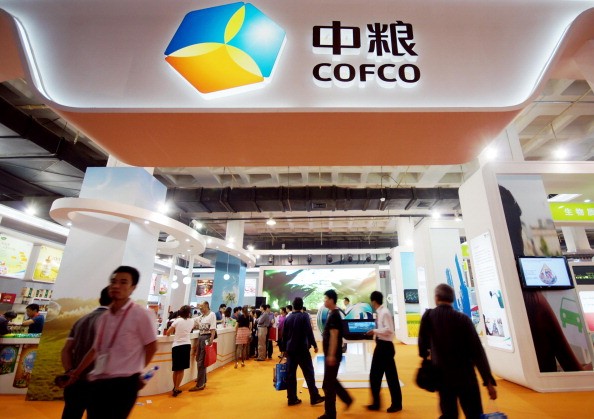After its successful acquisition of rival Chinatex Corp, grain and oil giant China National Cereals, Oils and Foodstuffs Corp (COFCO) announced on Monday that it will shut down six departments at its headquarters and set up professional operating platforms to manage some of its businesses.
The State-owned Assets Supervision and Administration Commission (SASAC), which approved the merger of the two state-owned enterprises (SOEs) on Friday, said Chinatex will become a subsidiary under COFCO.
The merger will help increase COFCO's market share in the edible oil processing sector to 18 percent, which will make it No.1 nationwide, COFCO said in an e-mail sent to the state-owned Global Times newspaper on Monday.
The combining of the two former competitors is in line with China's SOE reforms, which encourage the establishment of giant, highly competitive entities in various industries, said Feng Liguo, an expert at the Beijing-based China Enterprise Confederation.
"However, COFCO has little experience in operating the textile and cotton-spinning businesses of Chinatex, which is likely to be challenging after the merger," Feng added.
COFCO said its next steps are to further streamline operations and restructure the company into a "pilot investment firm".
The number of staff at its headquarters will be downsized from 610 to less than 240, the company said in its e-mail. It did not specify whether the affected employees will be transferred to other positions or be laid off.
COFCO intends to reduce losses by more than 50 percent in the next three years and have identified 65 subsidiaries for improvement and 91 subsidiaries for intensive management, SASAC said in a statement posted on its website earlier in June. The company would restructure 102 subsidiaries through mergers and acquisitions (M&As), according to the statement.
Liang Jun, a research fellow with the Guangdong Academy of Social Sciences, said that M&As are not enough and companies shouldn't see them as crucial to SOE reforms compared to building a modern corporate structure with an effective board of directors.
"We are paying too much attention to downsizing the State sector now," Liang said, noting that several media reports said the driving force behind the merger is that SASAC plans to trim down the number of SOEs to less than 100.
COFCO said it will assign responsibility for asset allocation, production, research and development, employee evaluations, payroll and recruitment to 18 professional platforms.
By 2020, the company will set up two or three platforms that generate 100 billion yuan ($14.91 billion) in yearly revenue and four or five that will generate 50 billion yuan, the e-mail said.
However, the company did not disclose details on how those platforms will operate and how the hiring process will be, Liang said.
"It's still vague in terms of how COFCO will be transformed into an investment firm or a modern company," he added.
As the next step in line with China's SOE reforms, COFCO should also split its two major sectors. One is for edible oil and grain products traded in the market, while the other is foodstuffs production and management for state reserves, Feng said.



























